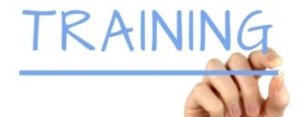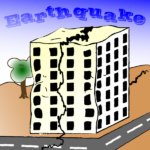READING PASSAGE 1 –Techno Institute of Training Information for Students
Read the text below and answer Questions 1—7,

Welcome to the Techno Institute of Training. Please read the following information carefully.
All texts and manuals required in our classes are available for sale in the Main Office, Room 105. Please see the receptionist to purchase your reading materials. You must have all materials when you arrive at your first class meeting, so please plan to get them ahead of time.
If for any reason you need to withdraw from a class that you are enrolled in, please note the following policies. Tuition will be fully refunded if you withdraw from the class before the second class meeting. Withdrawals made after the second class meeting but before the third will receive a refund of 50 percent of the tuition. Refunds cannot be made after the third class meeting. To withdraw from a class, please visit the Registrar’s Office in Room 103.
Tickets to our Friday night lecture series are available to all students free of charge. If you are interested in attending a lecture, please get your ticket from the Student Activities Office, Room 107. Each student is allowed only one free ticket per lecture. Also, visit the Student Activities Office to see a schedule of local field trips, student social hours, and other upcoming events.
The Counseling Office, Room 109 is open Monday through Thursday from 3:00 to 9:00 P.M. Assistance is available for choosing classes, making future educational plans, and searching for employment.
Changes in your class schedule may be made during the first week of the semester only. Class change forms are available in the Counseling Office. You must obtain the instructor’s signature to change classes.
Questions 8—14
Read the text below and answer Questions 8—14
Department of Motor Vehicles Applying for a Driver’s License
The Department of Motor Vehicles (DMV) is located on the fourth floor of City Hall. Business hours are Monday through Thursday 9:00 A.M. to 5:30 P.M. and Friday 12 noon to 8:30 P.M. Closed on holidays.
New Drivers
The fee for a first-time driver’s license is $100, payable by check or credit card. You must take both a written test and a road test. Study manuals for the written test are available at the General Information desk in Room 400. Call the General Information desk at 473-555-7839 to make an appointment to take your tests. When you arrive for your appointment, you will take the written test first and then the road test. If you fail the written test, a thirty-day wait is required before taking the test again. You will not be permitted to take the road test until you have passed the written test. If you fail the road test, you must show a certificate of completion of a driver’s education course given by an accredited institution before retaking the test. Driving courses are offered by the DMV. Ask for a course schedule at the General Information desk. First-time applicants are required to present a valid form of identification with a photograph such as a passport, student identification card, work identification card, or military registration card when applying for a license. Citizens of other countries are asked to present a current visa in addition to one of the above-mentioned forms of identification.
License Renewals
You must renew a license no more than six months after the expiration date to avoid having to retake the written and road tests. You can renew your current driver’s license in person or online. Bring your license and $65 cash or a check made out to the Department of Motor Vehicles to Room 405 during business hours. Credit cards are also accepted. License renewals can be made online at the DMV website. A credit card is required for online payment.
READING PASSAGE 2 – Organizing Your Desk

Follow these easy steps to a clutter-free desk:
A
The best way to begin is with a clean slate. Remove everything from the top of the desk—office supplies, documents, computer, printer—everything. Then move on to the drawers. Take out everything, then wipe down all surfaces with a damp cloth. Now all is clean and you are ready to start anew.
B
Next, take all those supplies and materials and sort through them. Group similar items together. For example, you might have a pile for small supplies such as paper clips and rubber bands, one for filing materials such as folders and labels, one for paperwork pertaining to current projects and another for paperwork to be filed, and so on. Group the items in a way that makes sense to you and the way you work.
C
Now, create an appropriate place for each group of items. A few items can be kept on the desktop, such as a pencil holder or a mail tray, but try to keep the desktop as clear as possible. Office supply stores sell a variety of trays, boxes, and other containers that are handy for storing everything from paper clips to large documents. They will help you keep both the drawers and the desktop organized.
D
Now you have completed the most important steps. Everything on your desk is organized. How will you keep it that way? The best way is to follow a routine. After you have finished using the paper clips or the scissors, put them back in their place. As soon as mail arrives on your desk, attend to it instead of letting it pile up. By developing regular practices like these, you will find it much easier to keep your desk organized.
E
Even when you have become accustomed to the routine of putting everything back in its place after use, you may still find that over time the organization starts to break down. This is why it is a good idea to develop a schedule. If you spend a short while reorganizing your desk at the end of every week or every month, you can keep the clutter from becoming overwhelming.
F
It is worth the small amount of time and effort it takes to keep your desk organized. Why? Psychologists tell us that an organized work space leads to more efficient and productive work.
Telecommuting
Questions 21 -27
Read the text below and answer Questions 21—27.
Telecommuting, defined as working from home at least part of the time, is an increasingly common way to work. It has many benefits for employees. The fact that a telecommuter does not have to spend time each day traveling to and from work is one obvious advantage. Working from home can mean significant savings in time and money that was formerly spent on daily travel. The telecommuter no longer has to spend part of his or her salary just to get to work in order to earn that salary. Not having to deal with traffic, bus schedules, or other logistics of travel also saves the telecommuter a good deal of unnecessary stress. As a result, the telecommuter can approach work with more energy and more positive feelings. There can also be a similar positive effect on the telecommuter’s personal life, as there will be more energy and time left to devote to family.
Telecommuting is not for everyone. It works best for people who are able to manage their own time and work independently. Unfortunately, even the most independent worker can start to feel isolated over time. This can be managed, however, by creating a schedule that balances work hours spent at home with work hours spent at the office. Many telecommuters, for example, go into the office periodically in order to attend staff meetings or work with colleagues. Another issue many telecommuters face is the distractions of home life. It can be hard to concentrate on work when family members are demanding attention. Therefore, it is important for telecommuters to establish a work plan that is satisfactory to all members of the family. In addition, some telecommuters find that spending their workday at home results in higher costs for electricity and heating. They may also have new expenses, such as paying for an Internet connection, that they did not have before.
READING PASSAGE 3 – The Power of Earthquakes

Earthquakes have inspired both fear and curiosity in people throughout history. While ancient peoples used myths to explain earthquakes, modern scientists have developed the theory of plate tectonics. According to this theory, the Earth’s surface is broken into many pieces that can move against each other, causing tremors at the Earth’s surface. To better understand these events, scientists have developed sophisticated equipment to measure, record, and even begin to predict future earthquakes. While the scientists of today may understand a great deal more than our ancestors did, they also recognize that there is still much to learn about the destructive powers held deep within the Earth.
Before scientific explanations were established, many cultures explained earthquakes by attributing them to the movements of mythical creatures, such as frogs, turtles, and even flea-infested dogs. Japanese mythology tells of a great catfish guarded by the deity Kashima. When Kashima let his guard down, the catfish thrashed about, causing the Earth to tremble. In India, myths tell of the Earth being held upon the shoulders of an elephant that shook its head when tired. The Greeks believed that the shaking of the Earth was the rumbling of the god Poseidon’s horses traveling through the skies or across the Earth. Or it was caused by Poseidon pounding his trident on the ground. The number and variety of these mythological explanations for earthquakes show how important it has always been to people everywhere to understand what causes the mysterious shakings of the Earth.
Beginning in the early 1960s, many in the scientific community began espousing the theory of plate tectonics, which explains that the surface of the Earth, the crust, is broken into many pieces called tectonic plates. Some of these plates are extremely large, such as the Eurasian Plate, on which sits most of Europe and Asia. Others are smaller, such as the Caribbean Plate, which is mostly underwater in the Caribbean Sea. These plates float on the Earth’s mantle, a bed of molten rock called magma. Deeper forces inside the Earth’s core heat this magma and cause it to flow underneath the plates, pushing the plates. The tension created at the boundaries of opposing plates can often become strong enough to snap them past each other, sometimes with the violent force that we know as an earthquake.
Scientists describe the movement of the plates in relation to each other in three principal ways. First, when two plates are forced into each other, one plate slides below the other. This is known as a convergent boundary. As the lower plate goes down, the upper plate often rises, forming mountains. The Himalayas, for example, were formed by the Indian Plate crashing into the Eurasian Plate. The second type of boundary is where two plates move apart from each other. This is known as a divergent boundary. An example of this is the Mid-Atlantic Rift, found at the bottom of the Atlantic Ocean. At this boundary, the North American Plate and the Eurasian plate are being forced apart, at an average rate of 2.5 centimeters1 per year. The third type is a transform boundary, where the edges of two plates slide in opposite directions parallel to each other. When the pressure between these plates is great enough, they snap violently past each other. This type of interaction between plates is the cause of many of the earthquakes felt in California.
Seismologists, the scientists who study earthquakes, use a device called a seismograph to measure the force of earthquakes and tremors. The most sophisticated of these are capable of measuring even the slightest tremor and locating its origin. The measuring system most commonly used is called the Richter Scale. It was invented in 1935 by a seismologist named Charles F. Richter. Because the difference in power between small and large earthquakes is so great, he developed a logarithmic scale in which an increase of one on the scale represents a tenfold increase in power. This means that an earthquake with a magnitude of 4.0, which would be easily felt at the Earth’s surface, is ten times more powerful than a magnitude 3.0 quake and 100 times more powerful than a magnitude 2.0 quake, which often goes unnoticed. The data the scientists collect allow them not only to document past earthquakes, but to learn to predict future events.
While scientists today know much more about earthquakes than ever, there is still much to be learned. Seismologists have helped us understand more about how earthquakes happen and why they occur in some parts of the world but not others. All of this knowledge informs us about our Earth and protects us from some of the potential dangers. There are still, however, many forces in the Earth that we do not understand, with the potential to move, shake, and reshape the world.
You need to be registered and logged in to take this quiz. Log in
